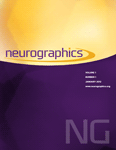
Monogenetic Arteriopathies Associated with Pediatric Stroke: Pearls for Neuroradiology Clinical Practice
Awareness of pediatric stroke and its etiologies is important for any neuroradiologist who interprets acute pediatric imaging. Pediatric stroke is common, affecting 3−25 per 100,000 neonates and children annually in developed countries, with the highest incidence in neonates (1
in 4000 live births). Many survivors of pediatric stroke are left with serious morbidity and permanent disability as well as long-term care requirements. Risk factors for pediatric stroke are numerous, ranging from congenital cardiac disease to infection to vascular pathologies. The current
discussion will focus on arteriopathies, one of the leading causes of stroke among pediatric patients. Not limited to acquired vascular disease, a spectrum of monogenetic arteriopathies has been associated with childhood and neonatal stroke. Many of these disorders demonstrate unique clinical
features as well as characteristic vascular and parenchymal imaging findings. This article aims to provide an up-to-date review of the clinicoradiologic features, underlying pathophysiologies, and management considerations for these disorders. The treatment and disease course vary by disease,
so timely and accurate diagnosis is critical and will have both immediate and long-term care implications for these patients.
Learning Objective: To recognize the imaging and clinical features of the most common monogenetic arteriopathies in pediatric stroke and understand new directions in management of these patients.
Learning Objective: To recognize the imaging and clinical features of the most common monogenetic arteriopathies in pediatric stroke and understand new directions in management of these patients.
Keywords: ACA = anterior cerebral artery; AGS = Aicardi-Goutières syndrome; ALGS = Alagille syndrome; HANAC = hereditary angiopathy with nephropathy, aneurysms, and muscle cramps; HGPS = Hutchinson-Gilford progeria syndrome; MD = Menkes disease; MMD = Moyamoya disease; NF1 = neurofibromatosis type 1; SCD = sickle cell disease; TCD = transcranial doppler ultrasound
Document Type: Research Article
Publication date: 01 July 2025
- Access Key
- Free content
- Partial Free content
- New content
- Open access content
- Partial Open access content
- Subscribed content
- Partial Subscribed content
- Free trial content